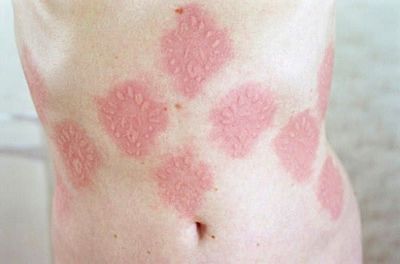
You wake up to the faint, stinging sensation on your arm. Pushing up your sleeve in the morning light, you see them: a few thin, red lines, faintly raised against your skin. Unexplained scratches. There’s no cat in the house, no errant rose thorns on your nightstand, no memory of stumbling into a doorframe in the dark.
Your first thought might drift toward the fantastical, the unsettling stories we tell in the dark. But the truth is far more fascinating, and it’s written not by some external phantom, but by the hidden, nocturnal drama of your own body. Those unexplained scratches appearing overnight aren’t a paranormal message; they are the physical ledger of your brain’s fierce and silent battle for rest.
Think of your sleep not as a state of passive shutdown, but as a complex, active landscape with distinct territories. You journey through the light doze of Stage 1, down into the deep, restorative slow-wave sleep of Stage 3, and finally, into the wild, vivid frontier of REM (Rapid Eye Movement) sleep. This is where the mystery of the scratches begins to unravel.
The Battle Between Brain and Body
REM sleep is a biological paradox. Your brain is wildly active, your eyes darting back and forth behind closed lids, crafting the intricate, often bizarre narratives of your dreams. Yet, to prevent you from physically acting out these dreams—from running from a monster or waving at a long-lost friend—your brain paralyzes you. It sends a powerful signal down your spinal cord that temporarily disconnects your major voluntary muscles from command. This state, known as REM atonia, is a vital safety mechanism.
But this system isn’t always perfect. The battle between a dreaming, active brain and a body under lockdown is a delicate one. Those unexplained scratches are often the scars of this internal conflict, evidence of one of two distinct scenarios:
- The Breakthrough Twitch: During the tumultuous peaks of a dream, a strong motor command can sometimes breach the inhibitory signal of REM atonia. It’s not a full-blown enactment of the dream, but a momentary, isolated rebellion—a hand jerking, a finger curling, a swift, claw-like motion of the nails against the skin. It’s a fleeting breach in the firewall, just powerful enough for your own fingernails to become the instrument of a tiny, unconscious act.
- The Primal Itch, Unconsciously Answered: This is a more common, yet equally fascinating, explanation. Throughout the night, your body experiences countless minor sensations—a tickle, a dry patch of skin, the brush of a sheet. Your conscious mind is offline, but your primal, subcortical brainstem is still on duty. It can register this minor irritation and send a simple, automated command to scratch it, all without ever rousing the higher centers of your brain. It’s a spinal reflex, like a knee jerk, but for an itch. Because you lack the finesse of conscious control, this automatic scratch can be surprisingly harsh, breaking the skin with the sharp, untrimmed edge of a fingernail.
Your Bedroom as an Unwitting Accomplice
Your body’s internal drama is only one part of the story. The stage upon which this plays out—your bedroom—can be a willing accomplice.
- The “Innocent” Rough Seam: That new set of jersey sheets might feel soft, but a single, sturdy seam or a tucked-in fitted sheet can create a surprisingly abrasive surface. A simple turn in the night, dragging your arm across this seam, can be all it takes to create a series of parallel, scratch-like marks.
- The Jewelry You Forgot: A ring with a slightly raised setting or a watch with a protruding clasp can easily become the source of the marks, scraping against your skin as you move through your sleep cycles.
- The Unconscious “Self-Grooming”: For some, particularly during periods of anxiety or stress, the simple act of running fingers over the skin can become a more pronounced, repetitive behavior in the twilight state between sleep and wakefulness. It’s a self-soothing gesture that, with just a bit of pressure, can leave its mark by morning.
Listening to the Whispers of Your Skin
So, what is your body trying to tell you with these mysterious morning markings? They are less a cause for alarm and more a gentle nudge to look closer at the quality of your rest.
- They are a signal of Sleep Turmoil: Frequent, unexplained scratches can be a soft sign of disrupted or fragmented sleep. You may be experiencing more micro-arousals or spending more time in the turbulent, transitional phases of sleep where these minor movements are most likely to occur.
- They are a Prompt for Pre-Sleep Care: This is the most actionable takeaway. See the scratches as a reminder to create a more forgiving sleep environment and a calmer pre-sleep ritual.
- Declaw the Night: Keep your fingernails smoothly filed and short. This is the single most effective step.
- Audit Your Linens: Feel your sheets and pajamas for any rough tags or seams. Opt for soft, seamless fabrics.
- Create a Ritual of Release: Spend 10 minutes before bed in a state of quiet mindfulness—reading a physical book, gentle stretching, or deep breathing. This can help calm the nervous system, potentially leading to less turbulent sleep and fewer disruptive movements.
Those unexplained scratches are not a ghostly visitation. They are a testament to the hidden, active world you inhabit each night. They are the faint, physical evidence of your brain’s heroic effort to tell you a story while keeping your body safe, a delicate balance that sometimes, quite literally, leaves a mark. By listening to this message, you can begin to smooth not just your skin, but the very quality of your sleep itself.